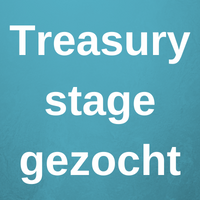Crypto-assets and EU regulation: to a global format
| 28-1-2019 | Carlo de Meijer | treasuryXL
It is increasingly becoming a certainty that crypto-assets are here to stay. Also regulators are now more convinced that these will be here for the long run. Long time taken a wait-and-see attitude, there is growing consensus at European regulators to come up with EU-wide regulation. While on the one hand EU regulation could give the crypto market legitimation and encourage the adoption of crypto-assets. Doing nothing could endanger both investors and financial markets.
Question is however: how should this regulation be shaped taken account the various specifics of crypto-assets and its users. And to what extent may the EU intervene on existing local member state regulation. Early this month, both the ESMA and EBA published their advice to the relevant EU institutions.
So let’s have a deeper dive.
What are crypto-assets (not)?
What makes shaping regulation for crypto-assets so difficult is that these are a unique phenomenon when compared to conventional financial instruments. According to Oliver Wyman they are governed by “a fundamentally different set of constraints, and as a consequence regulators have to take into account these specifics”.
First of all crypto-assets are not tied to national governments and central banks. No government regulation or guidance currently exists around managing crypto-assets. Most crypto-assets are not based within any one specific jurisdiction.
Second, the crypto-asset environment is not bound to one country. There is no single sovereign state that is responsible for regulatory oversight at all times. This will make it difficult to apply traditional regulation to control these crypto-assets.
A third complicating factor for shaping regulation is that cryptocurrencies as they are generally known today in fact do not perform all the functions that are generally understood to define the term currency. They are not acting as a medium of exchange; they are not particularly good as a store of value, given their volatility; and they are not being used as a unit of account. That is why for reasons of regulation it is better to use the term ‘crypto-assets’ instead of the more commonly ‘cryptocurrencies’
Why regulation for crypto-assets?
Regulatory certainty is a critical prerequisite and catalyst for technology adoption in financial services in general, also for crypto assets. It is becoming more evident that regulatory certainty can support safe innovation in the crypto-asset sector.
There are a number of issues that ask for specific attention by regulators.
First (and foremost) from a risk point of view. There are the inherent risks to investments due to volatile crypto-asset markets, when compared to conventional fiat currencies. Related to this is the vulnerability of crypto-assets to market manipulation given that the exchanges currently “sit outside of market abuse regulations”.
There is also increased scope for hacking, leading to the theft of the crypto-assets. Crypto-asset platforms are widely considered to provide opportunities for money laundering and other criminal activities because exchanges allow anonymous access and are not governed by any (AML) regulation.
Each of the above concerns underpin the need of a secure regulatory environment that offers investors and consumers sufficient safeguards. There are however many ways to create a workable, balanced regulatory framework. One that addresses consumer and market risks while supporting innovation, efficiency and competition. But finding this is a real challenge.
Read the full article of our expert Carlo de Meijer on LinkedIn

Economist and researcher










